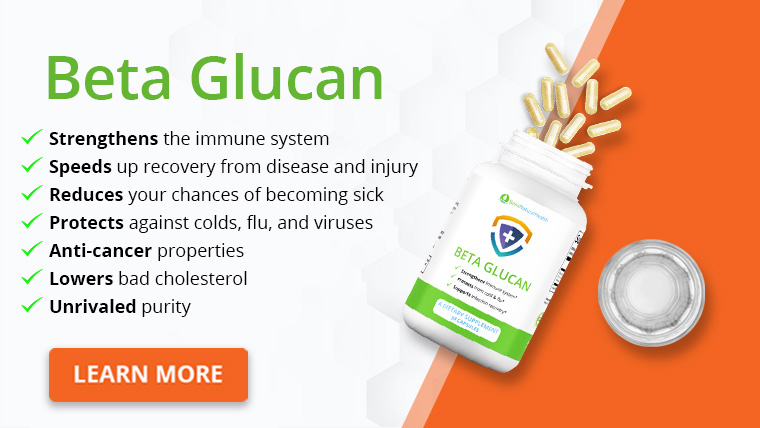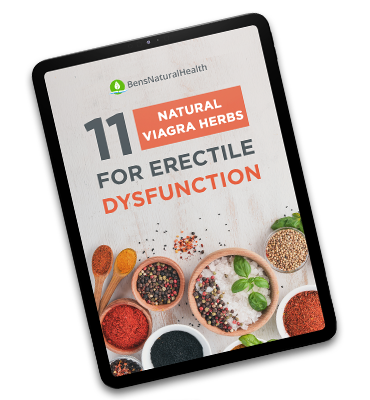Pelvic inflammatory disease (PID) is an inflammation of the female upper genital tract.
The leading cause of PID is gonorrhea and chlamydia.
Studies showed that PID affects about 750,000 women in the United States, especially those aged 15-29.
Since the early 2000s, the number of PID cases in the United States has decreased, thanks to the improved treatment of chlamydia cases.
However, this trend is beginning to increase recently.
PID is typically an ascending infection, spreading from the lower genital tract, such as the cervix, vulva, and vagina, to the upper genital tract. The female upper genital tract comprises the uterus, fallopian tubes, and ovaries.
Keep reading to learn more about what pelvic inflammatory disease is, its signs and symptoms, causes, complications, treatment options, and tips for prevention.
What is Pelvic Inflammatory Disease?
Pelvic inflammatory disease (PID) is an inflammation of the female upper genital tract. PID can be an infection to the:
- Cervix (cervicitis)
- The lining of the uterus (endometritis)
- Fallopian tubes (salpingitis)
- Ovaries (oophoritis)
- Areas around the ovaries and fallopian tubes (tubo-ovarian abscess)
- A combination of the above
In severe PID, the infection can spread to the peritoneum, causing peritonitis.
Signs and Symptoms of PID
People with PID can present with symptoms ranging from mild to severe. Usually, these signs and symptoms occur toward the end or a few days after the menstrual period.
The table below describes the different classifications of PID (acute, subclinical, and chronic).
| Clinical classification | Duration |
| Acute PID | Less than or equal to 30 days |
| Subclinical PID | Little to no symptoms or duration unknown |
| Chronic PID | More than 30 days |
Some signs and symptoms of PID include:
- Lower abdominal tenderness on both sides (sometimes radiating to the legs)
- Abnormal vaginal or cervical discharge (sometimes foul-smelling, yellowish, or greenish)
- Fever greater than 38°C
- Abnormal or irregular vaginal bleeding
- Deep dyspareunia, or painful sexual intercourse
- Nausea and vomiting
- Dysuria, or pain during urination
Sometimes, PID might cause mild or no symptoms, also known as subclinical PID. Hence, people tend to delay seeking treatment. Although subclinical PID produces lesser symptoms, it can still cause long-term complications.
Usually, PID caused by gonorrhea is more severe than PID caused by chlamydia and Mycoplasma genitalium.
Causes and Risk Factors
PID is often a polymicrobial infection of the female upper genital tract. Polymicrobial means that it involves different microorganisms simultaneously.
The leading cause of PID is sexually transmitted infections (STIs) such as chlamydial and gonorrheal infections, especially if they are untreated.
Other causes of PID are Mycoplasma genitalium infections and bacterial vaginosis. Bacteria that cause STIs are transmitted during sexual intercourse with an already infected partner.
Some significant risk factors for getting PID include:
1. Youth and young age during first sexual intercourse
Studies have shown that women who have had their first sexual intercourse under 18 have a higher risk of getting PID. Studies also showed that younger women are at a higher risk of PID.
2. Being sexually active or having unprotected sex
Beings sexually active means having sexual contact of any form, such as vaginal, anal, or oral sex with another person.
Being sexually active increases the chance of getting PID, especially unprotected sex. Condoms are an effective way of practicing safe sex to prevent STIs and PID.
3. Having multiple sexual partners
Studies have shown that the greater number of sexual partners, the higher the risk of PID.
The risk of PID in women who have had more than 10 vaginal sexual partners is 3 times greater than in women with one partner.
4. Having a history of PID
Having had PID does not mean immunity against subsequent PID. The risk of PID is still high, especially if you and your partner(s) have not been treated for PID and if you are having unprotected sex.
A prior history of PID increases the risk of developing recurrent infections because of the damage done to the reproductive organs during the previous infection.
5. Having a history of STI
STIs such as chlamydia and gonorrhea account for about 85% of PID cases. Recent data also show that Mycoplasma genitalium is an emerging cause of PID.
Studies also showed that women who have had an STI diagnosis are 3 times more likely to get PID.
A prior history of STI increases the likelihood of recurrent disease, which increases the risk for PID because of the damage to the reproductive organs during the previous infection.
6. Improper intimate hygiene practices, such as douching
A study found that about 1 in 4 women aged 15 to 44 practice vaginal douching in the US.
Douching can lead to PID by disrupting the normal vaginal flora and introducing microorganisms from the lower genital tract infections into the upper genital tract.
7. Recent use of an intrauterine device (IUD)
The insertion of an IUD, a birth control device, can increase the risk of PID up to 6 times within the first 21 days of placement. However, after 21 days, the risk returns to normal.
If you have an ongoing STI, your doctor will insist you get treated for that before inserting an IUD.
If you have an IUD and STI concurrently, it is advisable to remove the IUD. Once the IUD is removed, you should consider other methods of contraception, such as using a condom and abstinence from sex until PID is cleared.

Complications
Delayed or incomplete treatment of PID can cause long-term complications such as:
1. Infertility
Infertility is typically defined as the inability to conceive after 1 year of trying to become pregnant. Data showed a 5-fold increase in infertility in women who have had PID.
Other factors that increase the risk of infertility in PID are delay in treatment, repeated infections, and the severity of the disease.
PID is also one of the most common preventable causes of infertility in the United States.
2. Chronic pelvic pain
Chronic pelvic pain is seen in one-third of women with PID. The risk of having chronic pelvic pain is increased with recurrent PID.
The pain is thought to be related to inflammation, scarring, and adhesions from the infectious process.
Chronic pelvic pain can cause difficulty sleeping (insomnia) and depression. Your healthcare provider can prescribe medications to help you cope with the symptoms.
3. Ectopic pregnancy
PID can increase the risk of ectopic pregnancy. Ectopic pregnancy is when a fertilized egg implants itself outside the uterus where it normally should be.
Usually, the site of ectopic pregnancy is in one of the fallopian tubes. Rarely, ectopic pregnancy can be in the ovary, cervix, or abdomen.
The increased risk for ectopic pregnancy after a PID is associated with damage to the fallopian tubes.
Data showed that the rate of ectopic pregnancy in women with a history of PID is 7.8% and 1.3% in women without a history of PID.
4. Recurrent PID
Some people may have repeated episodes of PID or recurrent PID, likely due to incomplete treatment of the previous pelvic inflammatory disease.
It is crucial to ensure that the previous PID is cleared by completing the course of antibiotics and ensuring that your sexual partner(s) are tested and treated if necessary.
Recurrent PID can increase the risk of infertility due to repeated damage to the reproductive organs.
It can also increase the risk of future infections because the protective structure of the genital tract is damaged.
5. Tubo-ovarian Abscesses
Tubo-ovarian abscesses involve the fallopian tubes, ovary, and sometimes, other adjacent pelvic organs such as the bowels and bladder.
An abscess is a collection of infected fluid. An abscess can sometimes rupture and cause sepsis, a life-threatening condition where the infection enters the bloodstream.
A tubo-ovarian abscess rupture can cause severe pain in the lower abdomen, quickly followed by nausea, vomiting, and very low blood pressure. A ruptured abscess is a medical emergency.
6. Peritonitis
Peritonitis is an inflammation of the peritoneum, the membrane that covers the abdominal cavity.
PID can cause the infection to invade the peritoneum, causing severe pain in the entire abdomen.
7. Fitz-Hugh-Curtis syndrome
Sometimes, PID can spread to the tissues around the liver, which is higher in relation to the pelvic organs. When this happens, it causes inflammation and the formation of adhesion around the liver capsule.
This is also known as Fitz-Hugh-Curtis syndrome, which can cause pain around the right upper quadrant of the abdomen.
The pain resembles that of a gallbladder disorder or gallstones, where it worsens with movement and breathing.
Can Men Get Pelvic Inflammatory Disease?
No. Since PID is defined as an inflammation or infection of the female upper genital tract, such as the uterus, fallopian tubes, and ovaries, men cannot get PID.
However, their female partner(s) can get PID. If their female partner(s) get PID, they must also be evaluated for STIs to ensure that treatment is promptly given to stop the cycle of infection.
Get Your FREE Erectile Dysfunction Guide
- Eleven most important herbs to improve erections
- Natural lifestyle changes to reverse erectile dysfunction
- Developed exclusively by our medical doctor
When To See a Doctor?
If you notice signs or symptoms of PID or other STIs, consult your healthcare provider immediately for prompt treatment.
This can significantly reduce the risk of long-term complications from PID. Some symptoms require immediate medical attention, such as:
- Severe lower abdominal pain
- Foul-smelling vaginal discharge
- Severe vomiting
- High fever
- Very low blood pressure
Your doctor may decide to hospitalize you if:
- They are uncertain about the diagnosis
- You have developed a tubo-ovarian abscess
- They think that you might need surgical intervention
- You have severe symptoms
- You’re pregnant
- You are unable to tolerate oral therapy because you are vomiting
- You are not responding to outpatient treatment
Diagnosis
PID is primarily a clinical diagnosis. Hence healthcare providers should maintain a high index of suspicion when female patients of reproductive age are presented with abdominal and pelvic pain.
According to the Centers for Disease Control and Prevention (CDC), there are some minimum, additional, and definitive criteria for diagnosing PID.
Healthcare providers should obtain a thorough history, including asking about your sexual habits, birth control method, and symptoms. The onset and character of the pain should be clarified.
Healthcare providers should also perform a complete physical examination to elicit uterine, adnexal, or cervical motion tenderness.
This means that the reproductive organs in the pelvic cavity are tender. At least one of the physical examination findings is required to diagnose pelvic inflammatory disease.
Besides a doctor’s evaluation, there are also tests such as an endocervical swab, where a sample from your cervix will be tested for gonorrhea and chlamydia.
Your healthcare provider may also order a blood test. Other tests, such as ultrasonography, endometrial biopsy, or laparoscopy, can also be done to confirm the diagnosis.
The diagnosis of PID can be confirmed if healthcare providers find evidence of endometritis, free fluid in the fallopian tubes or tubo-ovarian complex, pelvic infections, and laparoscopic visualization of inflamed, purulent fallopian tubes.
Your healthcare providers may rule out conditions such as ectopic pregnancy, endometriosis, ovarian cyst rupture, ovarian torsion, appendicitis, diverticulitis, cystitis, and pyelonephritis.
Treatment
Because of the polymicrobial nature of PID, broad-spectrum regimens that provide adequate coverage of likely pathogens is recommended.
The therapeutic goal for the treatment of PID is 2-fold:
- short-term microbiologic and clinical cure with antibiotics
- long-term prevention of complications
Antibiotic regimens should cover all common pathogens and are typically for 2 weeks. Sexual partners also need to be screened and treated with empirical treatment. If you have an abscess or peritonitis, you may need surgical interventions.

Living with PID
There are several tips for taking care of yourself when you have PID:
1. Complete all your antibiotics as prescribed
Make sure to complete your antibiotics course as directed by your healthcare team. This ensures that the infection is cleared and there is a lesser chance of recurrence.
2. Get re-assessed and follow-up care
It is advisable to return to your healthcare provider for a re-assessment after initiating your treatment to ensure that the treatment is working. It is also important to go for all your follow-up care and appointments.
If you have problems during or after your treatment, please consult your healthcare team.
3. Abstain from sex in the meantime
Besides the fact that sexual activity may be uncomfortable during pelvic inflammatory disease, it is important to wait at least 1 week after completing your PID treatment before resuming sexual activities to prevent recurrent PID.
4. Pain relief
Getting adequate rest to ease symptoms such as fever and pain is generally a good idea. Prescribed painkillers should be taken as directed, as they can relieve pain and fever.
Your healthcare provider should be consulted and informed if over-the-counter (OTC) painkillers are needed. A hot water bottle or heating pad can also ease abdominal pain.
5. Avoid tampons
Until your pain is gone and your healthcare provider has cleared you to be completely well, you should use period pads instead of tampons.
6. Ask your partner(s) to get tested for STIs
Due to the leading cause of PID being STIs, your doctor will insist on notifying your sexual partner(s) in the past 2 months to assess and treat them as necessary.
This can help break the cycle of infection. In the meantime, avoid any sexual contact until you and your partner(s) are entirely well.
Some people may remain asymptomatic even though they are infected. Hence, they can still spread STIs.
Prevention
1. Practice safe sex
Safe sex includes consent, condoms, contraception, and communication. Condoms are the only contraceptive methods that can prevent the transmission of STIs, thereby preventing pelvic inflammatory disease (PID).
Consistent condom use has been shown to reduce the risk of recurrent PID, chronic pelvic pain, and fertility by 30-60%.
If you or your partner have sex with multiple people, it is helpful to get tested. Open communication is vital when practicing safe sex.
2. Avoid douching
Sometimes, PID is not due to a sexually transmitted infection but from other methods where the vaginal flora overgrows and invades the upper genital tract. Avoiding vaginal douching may lower the risk of getting PID.
Vaginal douching can push bacteria upward from your lower genital tract to the upper genital tract, introducing microorganisms into the otherwise sterile environment.
3. Regular screening for STIs
In the US, screening for chlamydia in all sexually active women younger than 25 and those older than 25 with increased risk is recommended.
Screening for chlamydia and gonorrhea in young women has reduced the risk of PID in high-risk populations.
If you’re sexually active, it is good to talk to your healthcare provider about yearly STI testing so that they can treat you before the infection spreads.
Before having sex with a new partner, it is also a good idea for both of you to get tested for STIs.
Conclusion
Pelvic inflammatory disease is a polymicrobial infection of the female upper genital tract. It can cause lower abdominal pain, abnormal vaginal or cervical discharge, and fever, among other symptoms.
If untreated promptly, it can cause infertility, abscesses, damage to the reproductive organs, chronic pelvic pain, and an increased risk of ectopic pregnancies.
STIs such as gonorrhea and chlamydia are the leading causes of PID, but it is not the only cause of PID.
Where PID is suspected, empirical treatment should be started to decrease the risk of complications. Practicing safe sex, getting regular screenings for STIs, and avoiding douching can prevent PID.
Explore More








